The Light Sussex chicken is a popular breed of poultry known for its beauty, hardiness, and versatility.
Originating in Sussex, England in the early 1900s, this breed quickly gained popularity for its ability to lay a large number of eggs and produce high-quality meat.
Today, the Light Sussex is still a favorite among backyard chicken keepers and commercial farmers alike.
If you want to learn more you can read my longer article about Sussex Chicken.
Light Sussex Chicken: Characteristics and Care

One of the most striking features of the Light Sussex is its plumage. These birds have a white body with black markings on their neck, tail, and wings.
They also have bright red combs and wattles, which add to their overall beauty. In addition to their good looks, Light Sussex chickens are known for their hardiness and adaptability.
They can thrive in a variety of climates and are resistant to many common poultry diseases.
If you’re considering adding Light Sussex chickens to your flock, there are a few things you should know. These birds are excellent layers, with hens producing up to 280 eggs per year.
They are also good meat birds, with a plump, flavorful carcass that is highly prized by many poultry enthusiasts.
Whether you’re a backyard chicken keeper or a commercial farmer, the Light Sussex is a breed worth considering.
Light Sussex Chicken Characteristics

Light Sussex chickens are a dual-purpose breed that is popular for both their meat and eggs. They are a large breed, with roosters weighing up to 9 pounds and hens weighing up to 7 pounds.
They have a calm and friendly disposition, which makes them a great choice for backyard flocks.
The Light Sussex chicken has a distinctive appearance, with white feathers and black markings on their necks and tails.
They have a single comb, which can be prone to frostbite in cold climates. They are a hardy breed, however, and can tolerate a wide range of temperatures.
One of the most notable characteristics of the Light Sussex chicken is their egg-laying ability. They typically lay around 250-300 eggs per year, which are large and brown in color.
They are also known for their meat quality, with a tender and flavorful meat that is sought after by many.
Overall, the Light Sussex chicken is a great choice for both novice and experienced chicken keepers.
They are easy to care for, have a friendly disposition, and are productive both in terms of eggs and meat.
Light Sussex Chicken Price and Value
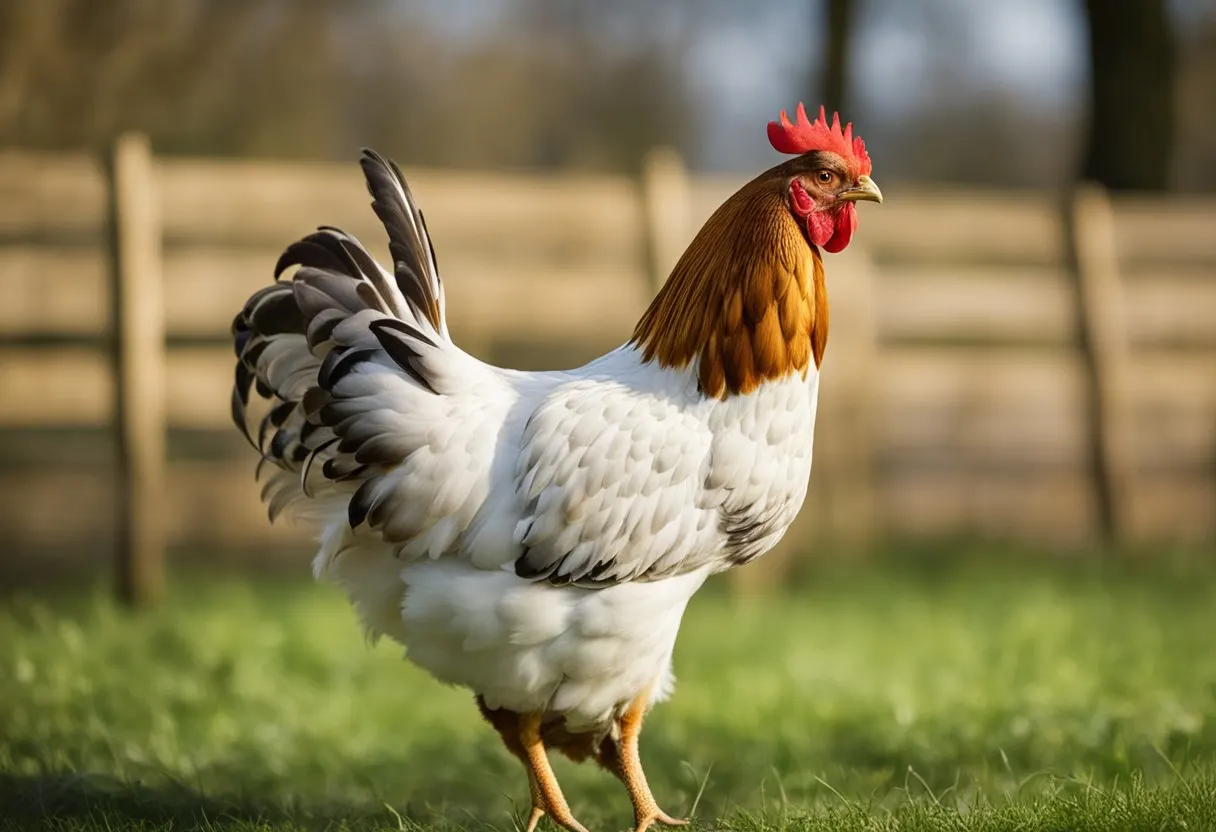
When it comes to purchasing Light Sussex chickens, the price can vary depending on a few factors. The age, sex, and quality of the bird can all impact the price.
Generally, Light Sussex chickens are priced between $20 and $50 per bird.
While this may seem like a steep price for a single bird, it’s important to consider the value that Light Sussex chickens can bring to a flock.
They are known for being excellent layers, producing large brown eggs consistently throughout the year.
They are also hardy birds that can tolerate a variety of climates and are relatively easy to care for.
In addition to their practical value, Light Sussex chickens can also be a great addition to a backyard flock for their aesthetic value.
Their striking black and white plumage and friendly personalities make them a popular choice for chicken keepers.
Overall, while the price of Light Sussex chickens may be higher than some other breeds, their value in terms of egg production, hardiness, and personality make them a worthwhile investment for many chicken keepers.
Light Sussex Chicken Rooster Specifics

Light Sussex roosters are known for their striking appearance and confident demeanor.
They are typically larger and more robust than their female counterparts, with a proud and upright stance that exudes confidence.
In terms of physical characteristics, Light Sussex roosters have a bright red comb and wattles, and their feathers are a mix of white and black with a distinctive pattern.
They have strong, muscular legs and feet with sharp claws that they use for protection and dominance.
Roosters are also known for their distinctive crowing, which can be heard from quite a distance away.
They use this vocalization to communicate with their flock and establish their dominance within the group.
When it comes to behavior, Light Sussex roosters are generally quite protective of their hens and will fiercely defend them from any perceived threats.
They are also known for their tendency to be territorial and may become aggressive towards other roosters or unfamiliar animals that enter their space.
Overall, Light Sussex roosters are impressive birds with a commanding presence.
They are a great choice for those looking to keep a backyard flock, as they provide both beauty and protection.
Light Sussex Chicken Egg Production
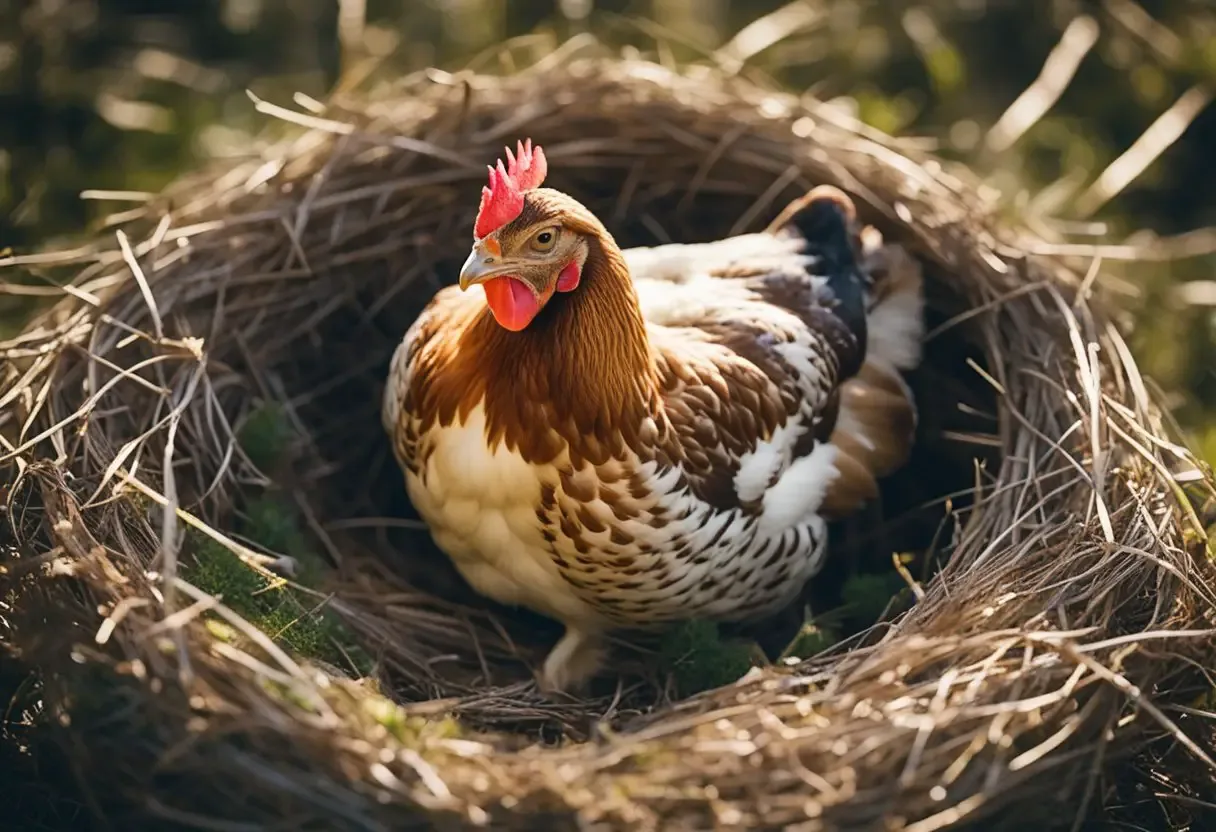
Light Sussex chickens are well-known for their egg-laying capabilities. They are reliable layers of large, brown eggs, which are a popular choice for both home and commercial use.
In this section, we will discuss the egg production of Light Sussex chickens, including egg color, egg quantity, and laying age.
Egg Color
Light Sussex chicken eggs are brown in color, with a slight variation in shade depending on the individual hen.
The brown color of the egg is due to the pigment called protoporphyrin, which is deposited on the eggshell during its formation. The eggs are medium to large in size, with a smooth and glossy surface.
Egg Quantity
Light Sussex chickens are prolific egg layers, with the ability to lay up to 280 eggs per year. The egg production rate can vary depending on factors such as age, diet, and environment.
It is important to note that egg production can decrease during the winter months due to decreased daylight hours.
Laying Age
Light Sussex chickens typically begin laying eggs at around 20-24 weeks of age, although this can vary depending on the individual bird.
They are known for their early maturity and consistent egg-laying throughout their lifespan. With proper care and nutrition, Light Sussex chickens can continue to lay eggs for several years.
In conclusion, Light Sussex chickens are excellent egg layers, producing large, brown eggs throughout their lifespan.
Their egg production rate is impressive, with the ability to lay up to 280 eggs per year. With early maturity and consistent egg-laying, they are a popular choice for both home and commercial egg production.
Light Sussex Chicken Lifespan and Health
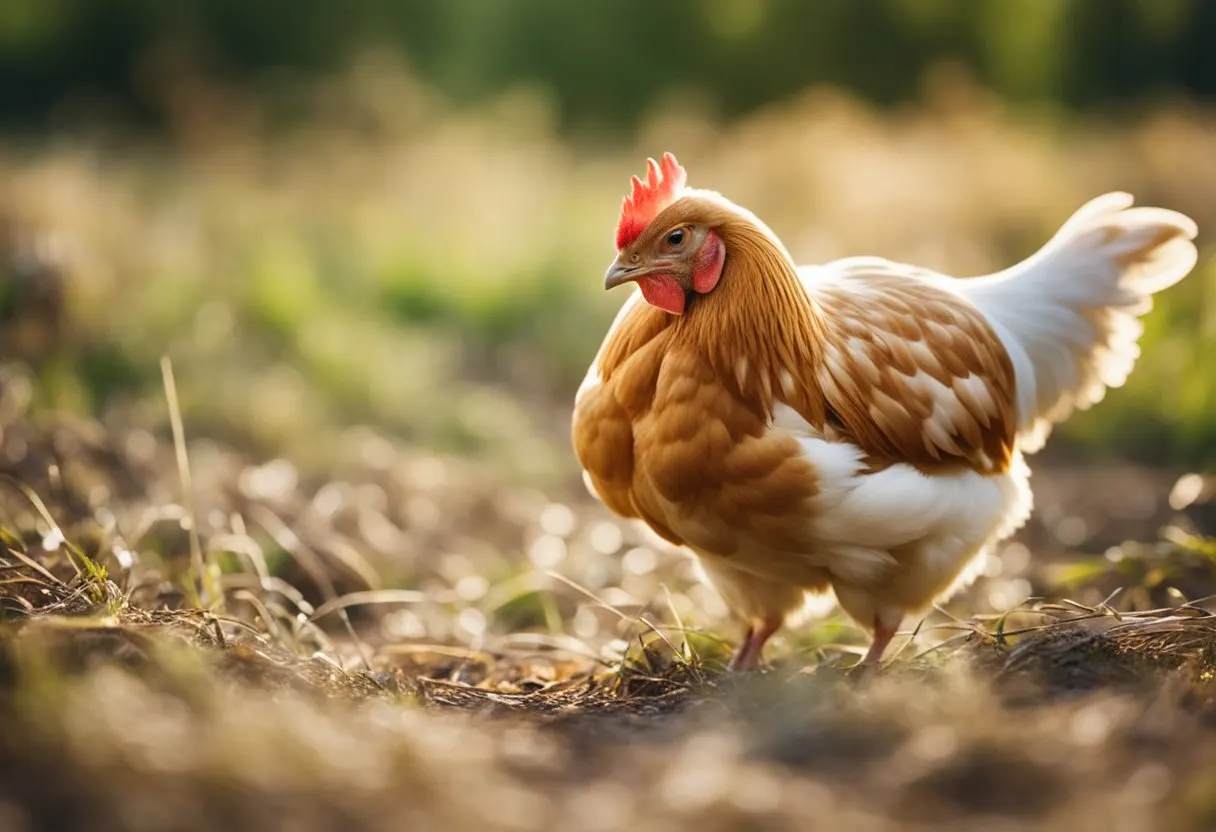
Light Sussex chickens are known for their hardiness and longevity. With proper care, these birds can live for up to 8 years or more.
However, like all living creatures, they are susceptible to various diseases and health issues, which can affect their lifespan.
To ensure the health and longevity of your Light Sussex chickens, it is important to provide them with a clean and comfortable living environment, a balanced diet, and regular veterinary checkups.
This will help prevent common health problems such as respiratory infections, parasites, and egg-laying issues.
It is also important to note that Light Sussex chickens are prone to obesity, which can lead to a range of health problems, including heart disease and joint issues.
Therefore, it is important to monitor their food intake and provide them with plenty of opportunities for exercise.
In addition to proper care, genetics also play a role in the lifespan and health of Light Sussex chickens.
It is recommended to purchase birds from reputable breeders who prioritize the health and longevity of their birds through careful breeding practices.
Overall, with proper care and attention, Light Sussex chickens can live long and healthy lives, providing their owners with years of enjoyment and companionship.
Light Sussex Chicken Usage and Purpose
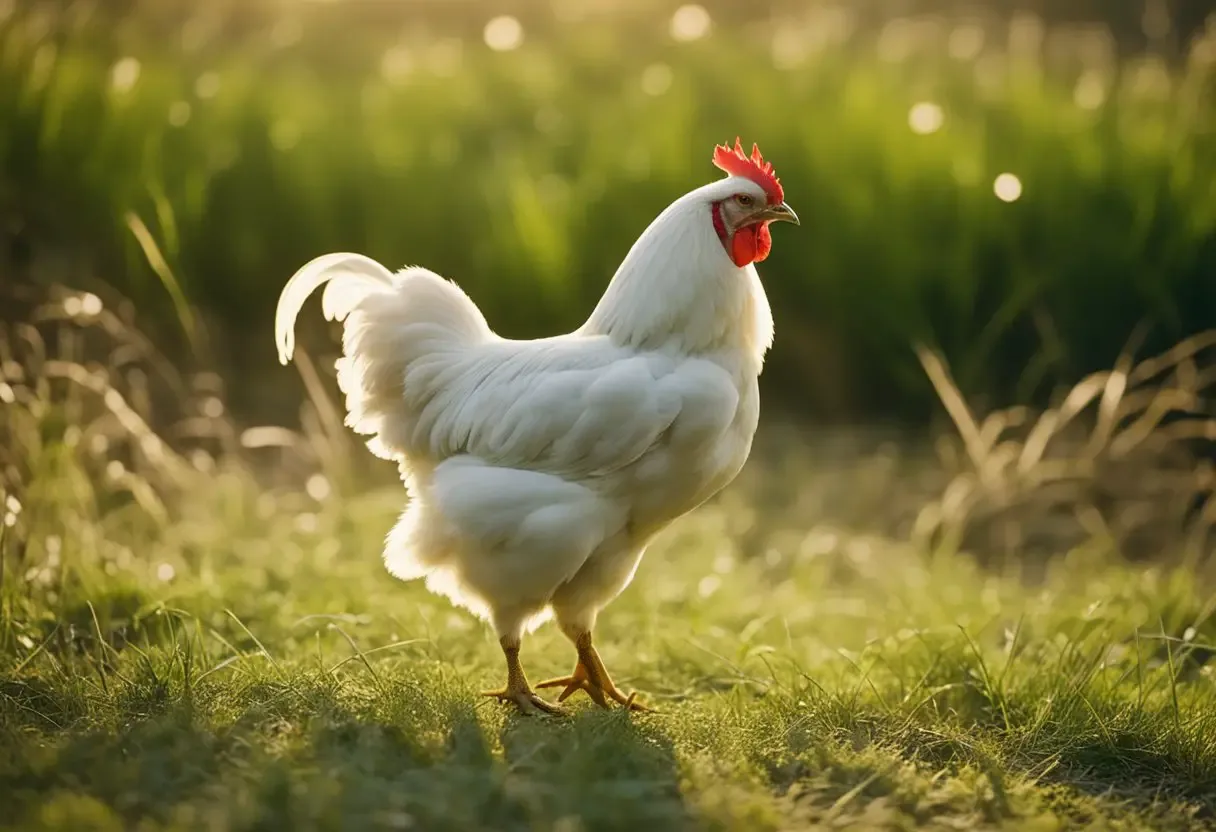
Light Sussex chickens are a dual-purpose breed, meaning they are suitable for both meat and egg production.
They are known for their large size and good egg-laying abilities, making them a popular choice for backyard farmers and commercial operations alike.
In terms of meat production, Light Sussex chickens are known for their tender and flavorful meat. They are typically ready for processing at around 16-20 weeks of age, depending on the desired weight.
When raised for meat, they can reach a weight of up to 10 pounds, making them a good choice for those looking to raise larger birds.
When it comes to egg production, Light Sussex chickens are known for their large, brown eggs. They are consistent layers, producing around 250-300 eggs per year.
Their eggs are popular among consumers due to their rich flavor and high nutritional value.
Light Sussex chickens are also known for their calm and friendly temperament, making them a good choice for families with children or those looking for a docile breed.
They are hardy birds that can adapt to a variety of climates and are known for their good foraging abilities.
Overall, Light Sussex chickens are a versatile breed that can be used for both meat and egg production, as well as for their friendly demeanor and good foraging abilities.
They are a popular choice among backyard farmers and commercial operations alike.
Light Sussex Chicken Broodiness
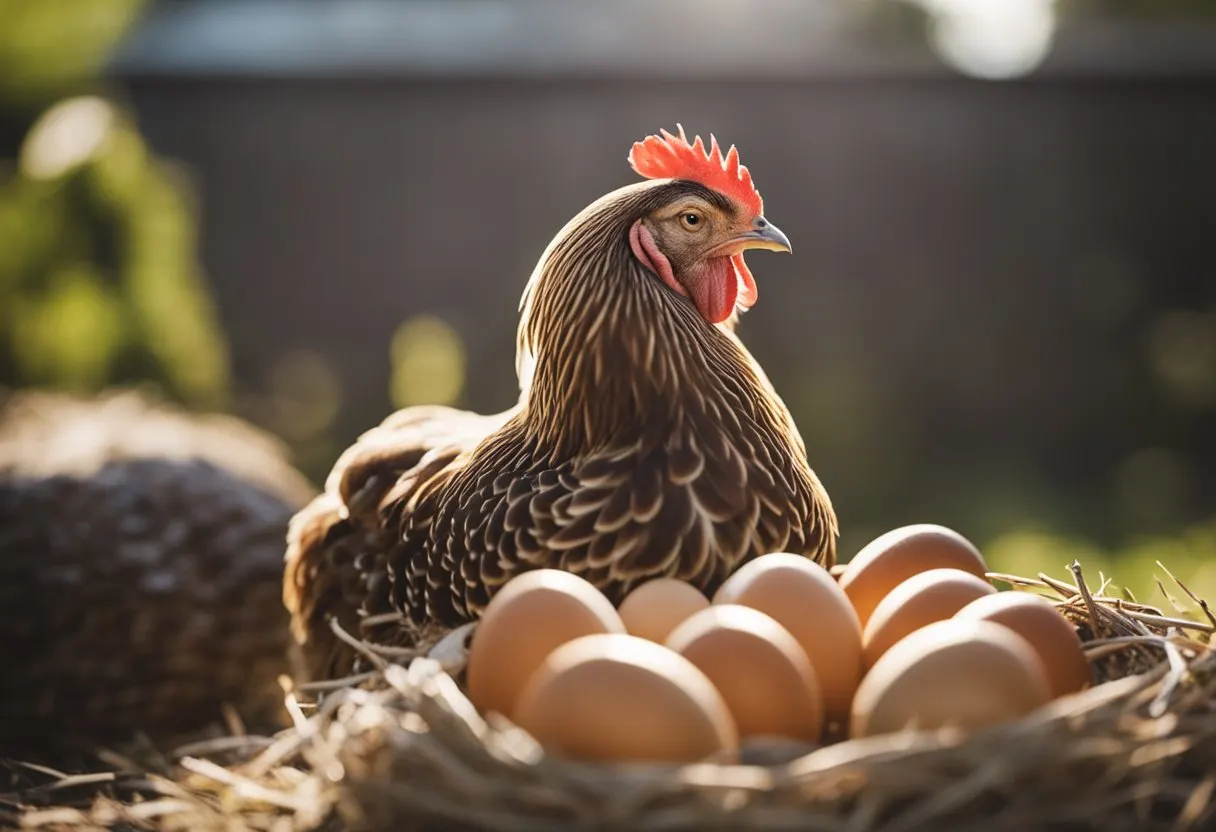
Light Sussex hens are known to be broody, which means they have a natural inclination to sit on their eggs and hatch them.
This behavior can be both beneficial and problematic for chicken keepers, depending on their goals.
When a Light Sussex hen goes broody, she will stop laying eggs and focus on incubating her clutch of eggs.
This can be a desirable trait for those who want to hatch their own chicks, as it eliminates the need for an incubator.
However, broody hens can also become aggressive and territorial, making it difficult for other hens to lay their eggs or access food and water.
It is important to note that not all Light Sussex hens will go broody, as it can be influenced by factors such as age, genetics, and environmental conditions.
Additionally, some chicken breeds are more prone to broodiness than others, and Light Sussex hens fall into this category.
For those who want to discourage broodiness in their Light Sussex hens, there are several methods that can be employed.
These include removing eggs from the nest as soon as they are laid, providing a separate nesting area for broody hens, or even using a broody coop to isolate them from the rest of the flock.
Overall, Light Sussex hens are known to be broody, and while this behavior can be both beneficial and problematic, there are ways to manage it effectively.
Related Articles
- Speckled Sussex Chicken: Characteristics, Care, and Egg Production
- Silver Sussex Chicken: A Guide to Breed Characteristics and Care
- White Sussex Chicken: Characteristics and Care Guide
- Do Chickens Eat Hosta? Understanding Chicken Behavior and Plant Consumption
The Light Sussex chicken is a popular breed of chicken that is known for its striking white feathers with black markings.
They are a dual-purpose breed, meaning they are suitable for both meat and egg production, and are also good foragers.
They are known for their calm and friendly temperament, making them great pets and suitable for backyard chicken keeping.
They are also hardy birds that can tolerate cold temperatures well. Overall, the Light Sussex chicken is a great choice for those looking for a productive, attractive, and easy-to-handle breed.
